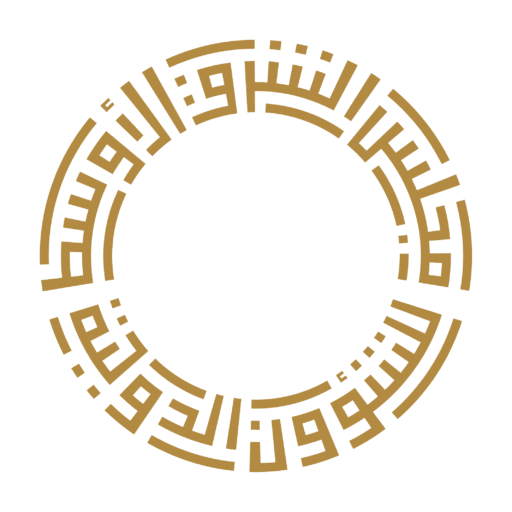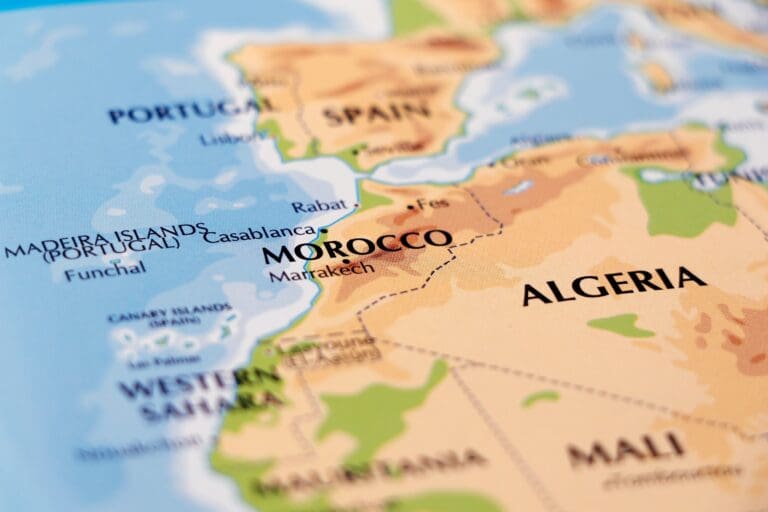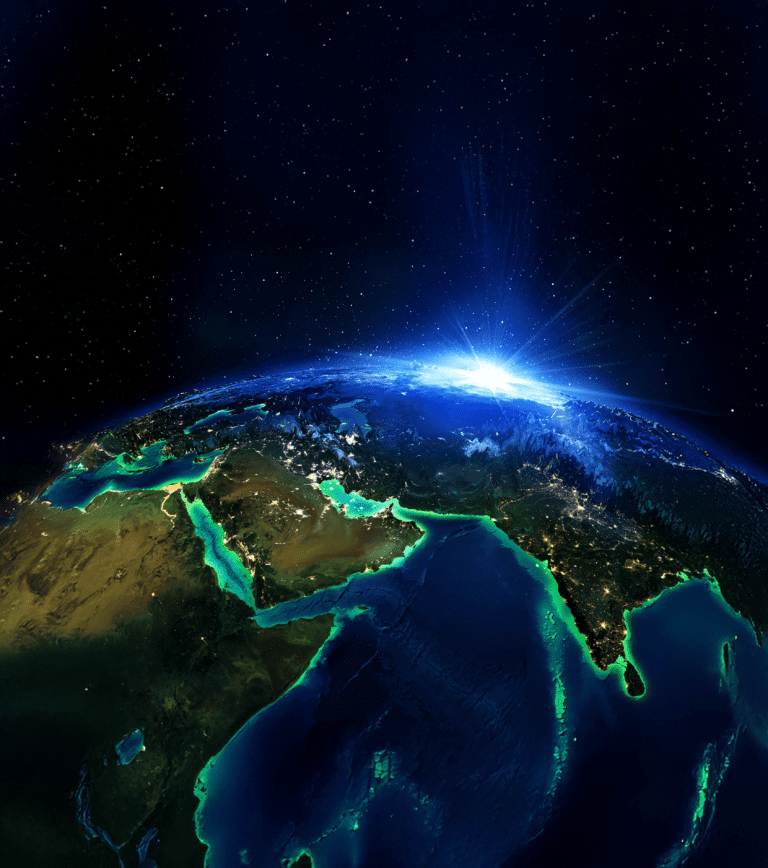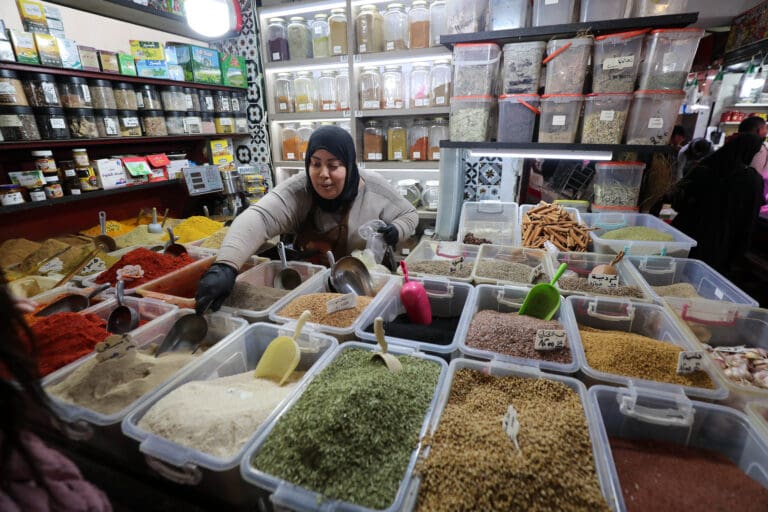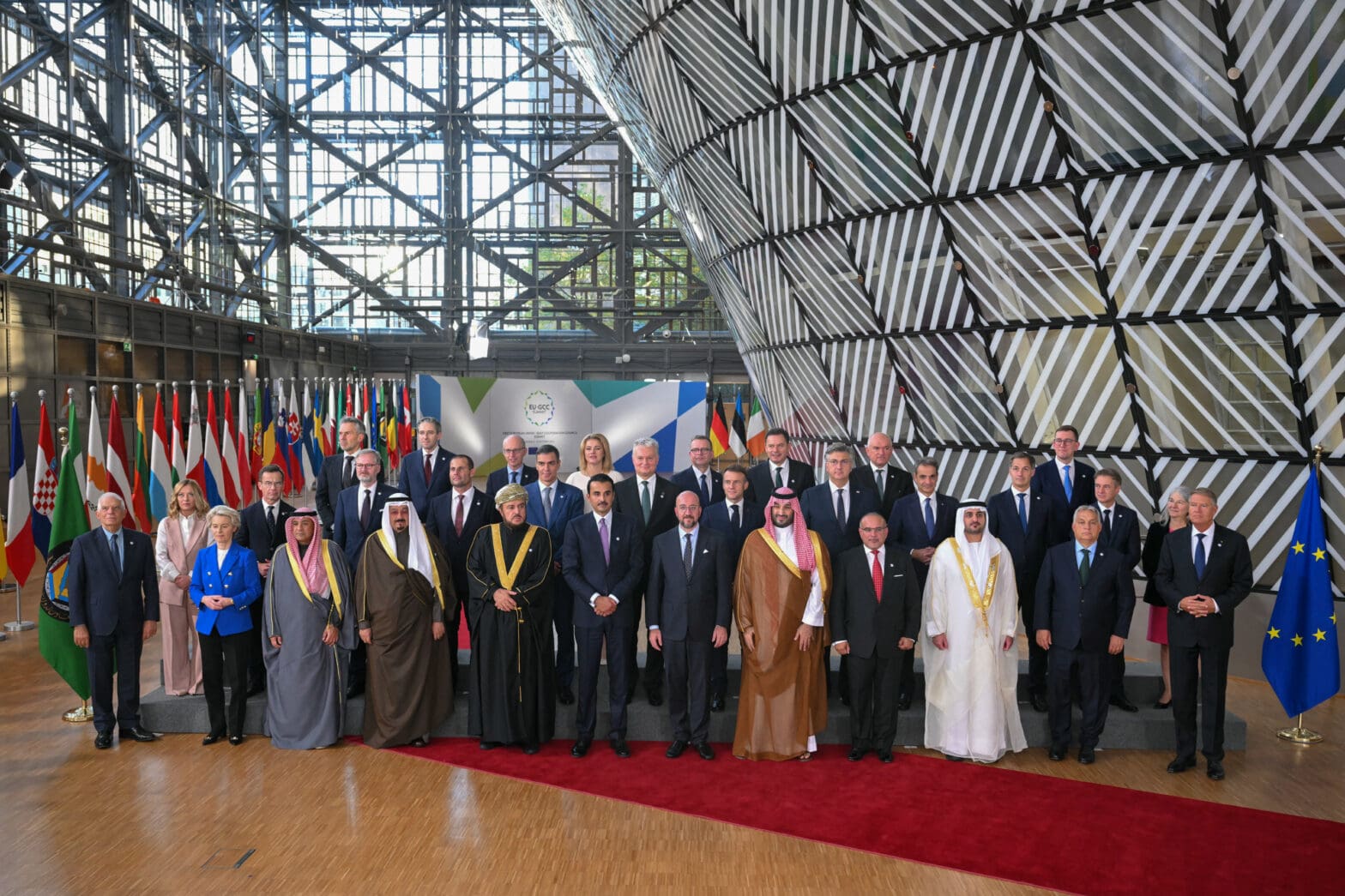
Lost in the Mix:
The EU and the Complexities of an Evolving GCC-Asia Relationship
Issue Brief, February 2025
Key Takeaways
The GCC-Asia Relationship Is Rapidly Expanding: Driven by factors beyond energy, including trade, investment, and infrastructure, ties are growing between the Gulf Cooperation Council (GCC) states and Asian powers. This has significant implications for global trade and South-South cooperation, impacting actors such as the European Union (EU).
China’s Growing Influence in the Gulf: China’s rising prominence as the GCC’s primary trading partner, coupled with its strategic investments and geopolitical influence, presents a significant challenge to the EU’s relevance in the region.
The EU’s Struggle for Relevance: The EU faces challenges in maintaining its influence within the GCC due to a historically complex relationship marked by tensions, a lack of strategic alignment, and the absence of a unified EU approach.
Intra-EU Divisions Weaken Its Global Standing: The EU’s internal issues, including a lack of unity and declining global perception, hinder its ability to effectively engage with the GCC and Asian powers. To adapt and forge mutually beneficial partnerships, the EU needs to overcome these challenges.
Introduction
The economic landscape is shifting dramatically as a burgeoning partnership between the Gulf Cooperation Council (GCC) and dynamic Asian economies gains momentum. What began as a simple exchange of oil for labor has transformed into a complex web of collaboration spanning construction, renewables, finance, tourism, and technology. This burgeoning relationship is reflected in the growth of trade between the two regions. In 2022, GCC trade with Emerging Asia surged to $516 billion, a 34.7% leap from the previous year.1 This trend shows no signs of slowing down, with projections indicating that this figure could reach $757 billion by 2030—nearly double the value in 2021. Notably, this eastward shift is happening at a pace that is outstripping the GCC’s trade with traditional Western partners. While trade with the U.S., UK, and Euro Area also grew, it did so at a more modest 32% over the same period.2 This underscores a significant reorientation in the GCC’s economic priorities, with Emerging Asia poised to overtake Advanced Economies as their primary trading partner by 2026. On the GCC side, the United Arab Emirates (UAE) leads the charge, with vibrant trade with Vietnam, Thailand, and Singapore.3 Qatar follows suit, demonstrating promising developments in its trade dynamics with substantial increases in export volumes to Thailand, Indonesia, and Singapore.4
This trajectory carries significant global implications. It represents a shift in the trade landscape and South-South cooperation, impacting other actors such as the European Union (EU). The latter was until 2020 the GCC’s primary trading partner until China has surpassed it, highlighting the increasingly multipolar nature of global trade. The EU faces a critical question: Can it reclaim its position as a leading trade partner for the GCC, or has the landscape shifted irrevocably? The EU must adapt its strategy and forge deeper ties with both regions or risk becoming irrelevant. The EU’s ability to adapt and forge mutually beneficial partnerships will be crucial in navigating this dynamic landscape.
This issue brief analyzes the EU’s challenges in maintaining its influence within the GCC amidst a burgeoning GCC-Asia relationship and China’s rising prominence. It argues that the EU’s complex relationship with the GCC, entanglement with China, and internal struggles hinder its ability to compete effectively.
Why the EU Cannot Follow? A Three-Pronged Challenge
The EU faces hurdles in regaining influence in the GCC amidst a closer GCC-Asia relationship. The first hurdle lies in its complex relationship with the GCC, marked by historical tensions and the absence of a unified EU approach. Further complicating matters is the EU’s entanglement with China, where deep economic ties are interwoven with strategic competition. Finally, the EU grapples with its internal issues, and a lack of credibility that potentially hinders its ability to effectively engage with both the GCC and other Asian powers.
1. EU-GCC: False Start, Fragile Foundation
The EU faces a significant challenge in reclaiming its leading position in the GCC due to its historically weak relationship with the bloc and the rise of Asian competition. Despite shared interests in security, energy, and economic cooperation, progress has been hampered by bureaucratic hurdles, geopolitical disagreements, and a lack of strategic alignment.
When the EU and the GCC signed the Cooperation Agreement (CA) in 1988, the economic dimension eclipsed the political one. As a result, the tangible outcome of the CA was intended to be the conclusion of the Free Trade Agreement (FTA). The FTA aimed to secure EU energy access and improve EU market access, while the GCC anticipated increased trade, better export access, and European capital influx for economic diversification. After 37 years since the beginning of negotiations, the FTA has yet to materialize.
The FTA with the GCC could have been the first of its kind. However, other blocs have already forged similar agreements. Notably, Mercosur, the South American trade bloc comprising Argentina, Brazil, Paraguay, and Uruguay, reached an agreement in principle with the EU in June 2019. On the other hand, South Korea signed an FTA with the GCC in December 2023 which will significantly boost trade between the two regions. Additionally, China is actively pursuing an FTA with the GCC and negotiations are ongoing. Compared to these efforts, the EU’s efforts on its FTA with the GCC appear less vigorous to say the least. The EU is losing ground to its Asian competitors in terms of securing preferential trade access to the Gulf market.
The FTA is a classic example of the institutional differences between the EU and the GCC.5 While the EU operates as a supranational body, with the European Commission wielding significant power in trade negotiations, the GCC is an intergovernmental organization, where individual member states retain significant autonomy in foreign policy and governance. At the GCC level, smaller states fear more integration could mean ceding sovereignty to the stronger state among the six: Saudi Arabia.6
The stalled negotiations for the FTA exemplify these institutional challenges. The EU’s emphasis on a customs union and the inclusion of a human rights clause in the FTA also proved particularly contentious for the GCC. At the 18th IISS Manama Dialogue’s held in November 2022, then-GCC Secretary-General Nayef Al-Hajraf criticized the European Union’s approach to negotiations for the FTA. Al-Hajraf expressed frustration with the EU’s perceived lack of urgency.7 The EU-GCC FTA is unlikely to be signed for two reasons: China has surpassed the EU as the GCC’s top trading and investment partner. Second, and increasingly evident since the war in Ukraine and Gaza, the GCC states have shown more assertiveness in their foreign policy. They are in a stronger position to renegotiate a more favorable FTA (if/when they want to).
To overcome FTA negotiation challenges, the EU and GCC expanded their relations. They established working groups on industry, energy, and the environment, and in 1996, a ‘decentralized track’ was added to foster non-governmental ties. This track, modeled after the Barcelona Process, aimed to involve civil society, but faced difficulties due to the limited space for such engagement in some Gulf states.
This disconnect underscores the EU’s ongoing challenge in comprehending the nuances of the Gulf region, a challenge further highlighted by the slow progress in its recent strategic partnership signed in 2022. Despite initial success in establishing a strategic partnership with GCC, the EU faces an uphill battle in maintaining its relevance amidst the GCC’s burgeoning ties with Asian powers. The nascent strategic partnership has encountered hurdles in its first year, with a planned trade deal remaining elusive and joint initiatives on shared interests like climate change progressing slowly.8
These challenges are compounded by geopolitical complexities, such as differing perspectives on the Ukraine conflict, and internal issues like the “Qatargate” scandal. Furthermore, pre-existing reputational concerns have hindered progress on various fronts. The EU’s ability to navigate these multifaceted challenges and revitalize its engagement with the GCC will be crucial in determining its future role in the region.
2. Entangled Engagement with China and Conflicting Priorities
The second obstacle is the EU’s complex relationship with China, now the GCC’s primary trading partner. China’s economic influence in the region lessens the GCC’s reliance on the EU. The Belt and Road Initiative (BRI), China’s flagship infrastructure development program, has played a major role in expanding economic ties between China and the Gulf. This includes investments in ports, railways, and other infrastructure projects, in addition to the GCC supplying 41 percent of China’s energy supplies in 2022.
The EU’s relationship with China will impact its relations with both the GCC and Asian countries. The EU takes a strong stance on human rights, criticizing China’s records and this creates friction with some Association of Southeast Asian Nations (ASEAN) states with less emphasis on human rights. These countries might be wary of getting too close to the EU for fear of angering China, an important economic partner. The situation with the GCC is slightly different. While some GCC states maintain close economic ties with China, appreciating its non-interference policy, they also value their relations with the US and Europe. This provides the EU with some room to maneuver.
The EU can highlight its active contributions to maritime security in the region, including initiatives like the EUNAVFOR Aspides, which safeguards freedom of navigation and protects merchant vessels in the Red Sea, the Indian Ocean, and the Gulf region. This cooperation on maritime security addresses a key concern for the GCC and fosters trust without directly criticizing China, showcasing the EU’s value as a partner in maintaining regional stability.
The EU’s relationship with other Asian powers, like Japan, South Korea, and India, regarding the GCC is a complex mix of cooperation and competition. While these countries may find common ground on certain geostrategic issues, economic rivalry remains a significant factor.
The automotive sector serves as a prime example of this competitive landscape. The EU traditionally competed with the U.S., Japan, and South Korea for market share in the GCC. However, the recent surge of Chinese car manufacturers, offering aggressively priced and diverse models, has intensified the competition. The striking increase in Chinese car imports to Saudi Arabia, the largest GCC market, with a 363% rise in value and a 275.3% jump in the number of vehicles from 2019 to 2023, underscores the growing influence of Chinese automakers and the competitive pressures they exert on all players, including the EU and its Asian counterparts.
Meanwhile, the India-Middle East-Europe Economic Corridor (IMEC) initiative demonstrates a collaborative effort between the EU and India to counterbalance China’s BRI in the region. Though primarily an infrastructure project, IMEC carries significant geostrategic implications, offering an alternative to the BRI and potentially curbing Chinese influence. This collaboration highlights the potential for the EU to align with like-minded Asian powers like India on geostrategic matters while simultaneously competing with others, such as China, in key economic sectors.
The EU needs a nuanced approach, balancing cooperation with economic competition. It must adapt to market changes and identify areas for collaboration to stay relevant in the GCC.
3. The EU’s Waning Power and Internal Challenges
China has also increased its geopolitical influence, notably by brokering the Iran-Saudi Agreement in March 2023. This, along with its stance on the Gaza war, highlights its growing influence and its closeness to Arab allies in general. Chinese President Xi Jinping criticized Israel’s actions, called for a ceasefire, and welcomed the subsequent truce that began on 24 November 2023. This stance earned China favor in the Global South, while the EU’s perceived double standards on the Gaza conflict damaged its reputation in the Arab world and beyond. Perceptions matter. A 2023 European Council on Foreign Relations (ECFR) and Oxford poll found that the rest of the world sees the EU as an attractive destination, but not as a hard power on the global stage. People outside the EU are ‘unimpressed’ by its ability to project strength, and many outside the West doubt the long-term viability of liberal societies. The poll further reveals that a majority outside the EU believe Russia will win the war in Ukraine within five years, reflecting skepticism about the EU’s ability to influence the outcome. Finally, respondents rarely characterized the EU as ‘strong’ compared to the US and China.9
The EU’s economic and political clout has waned relative to other powers such as China, Russia, India, or Türkiye.10 This decline, coupled with the EU’s bureaucratic inertia and siloed decision-making, hinders its ability to adapt and influence partners like the GCC. Foreign policy requires a unified voice, yet member states often pursue independent agendas with the GCC and Asian partners, driven by national interests. This lack of unity weakens the EU’s overall position and creates confusion. Further complicating matters are internal divisions within the EU. Member states have differing priorities and comfort levels regarding human rights and territorial disputes, particularly those involving China. This makes it difficult for the EU to present a united front to the GCC and the Asian partners.
Policy Outlook
The EU faces a critical juncture in its engagement with the GCC-ASEAN corridor. To navigate the complexities of this dynamic region and reclaim its relevance, the EU has the opportunity to adopt a more proactive and multifaceted approach. This entails shifting from reactive diplomacy to a strategy of regionally tailored outreach, engaging directly with both the GCC and ASEAN as blocs. By fostering partnerships and pursuing shared interests through high-level visits, ministerial dialogues, and increased economic cooperation, the EU can build trust and demonstrate its commitment to the region.
Strengthening the 2022 strategic partnership with the GCC is crucial for addressing geopolitical challenges and fostering more effective collaboration. Furthermore, bridging the perception gap between the EU and the GCC requires fostering mutual understanding through people-to-people exchanges, cultural programs, and media collaboration. These initiatives can cultivate deeper appreciation and dispel misconceptions.
While the war in Ukraine remains a pressing concern, the EU must also adopt a more balanced approach to global challenges, recognizing the strategic and economic significance of the GCC-ASEAN corridor. The burgeoning economic dynamism and growing populations within this corridor present immense opportunities for trade and investment, fostering long-term economic prosperity for the EU.
By acknowledging these evolving dynamics, streamlining its decision-making processes, and presenting a united front, the EU can harness its potential in the GCC-ASEAN corridor. A proactive EU strategy will ensure that its voice remains relevant and its values continue to resonate in a rapidly evolving world.
